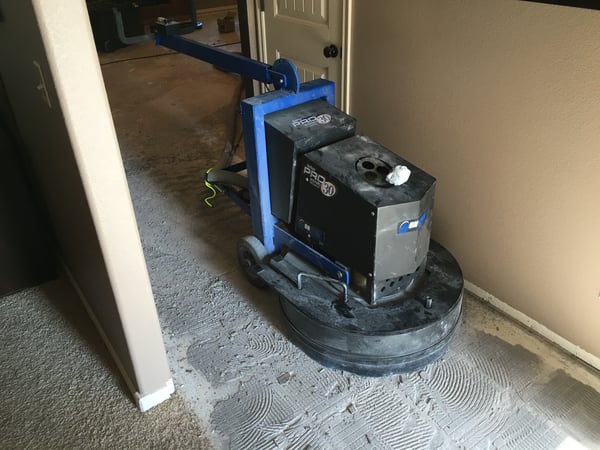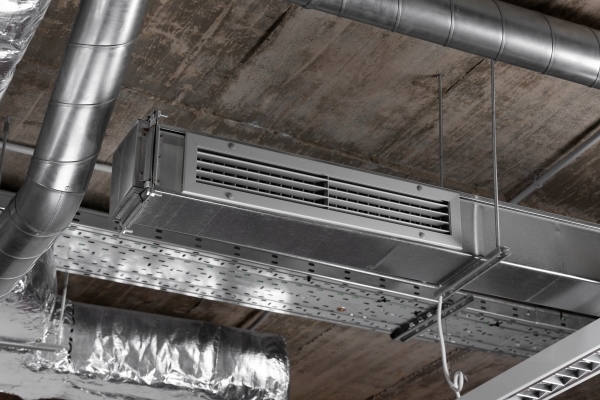When it comes to home improvement projects, no other material is as versatile and cost-effective as concrete. Suppose you’ve got your sights set on installing a driveway, garage floor, or another concrete floor structure in your home. In that case, you might be wondering how you can reduce the amount of concrete dust produced during the installation process.
After all, there are so many great things about using concrete in your home or garage floors. Aside from being durable, cost-effective, and easy to update with new finishes and textures over time, concrete surfaces also have excellent aesthetic benefits.
However, because of concrete production and installation processes, working with this material usually results in lots of dust raining down on workers and bystanders nearby.
Luckily for you, we’ve got some expert advice on how you can reduce the amount of dust produced when installing any type of concrete in your home.
What Is Concrete Dust?
Concrete dust is the fine powder that forms when cement is mixed with water and other aggregates like stones, sand, and gravel. It’s produced when concrete is being poured and when it’s setting and when it’s being broken up and crushed.
The concrete dust produced in each scenario is slightly different, although all three types can pose problems for workers and facilities. When concrete is poured, the cement and water are mixed and added with aggregates like sand and gravel.
Soft concrete is then poured into place and will slowly start to set. As it sets, the water in the concrete starts to evaporate, and this process produces a lot of fine concrete dust. A porous layer of concrete surface dust will also form on the surface of the newly set concrete floors.
Dust In Manufacturing Processes
Concrete dust is present in many manufacturing processes, especially when concrete is broken up, crushed, and ground. These processes include manufacturing concrete, concrete blocks, road pavement, and more.
Concrete is often ground up for uses like road bases. For example, concrete blocks are created when smaller pieces of concrete are stacked and bound together. Concrete dusting is also a problem in the coal mining industry, where crushed coal is used to create concrete.
These processes can cause concrete dust to be created, spreading throughout the entire facility.

Why Is Concrete Dust A Problem?
Concrete dust is problematic because it’s made up of very fine particles. These tiny bits of powder are very easily stirred up from even the smallest sources, meaning that one person walking through a room full of concrete dust can cause it to be blown all over the place.
Concrete is often mixed with water, a very polar molecule — it’s positively charged at one end and negatively charged at the other. This means it attracts other polar molecules, like the tiny cement and stone particles in concrete dust.
The water molecules in concrete dust attract and make the fine powder stick together and become heavier. When the tiny concrete particles grow bigger and heavier, they become easier to stir up and be blown away.
This causes problems in manufacturing plants where people work because it’s hard to keep the dust at bay when it’s so easily stirred up.
Concrete dust can also be a problem for manufacturers because it’s difficult to control emissions from a dust source. This means that it’s hard to monitor and reduce the amount of dust released into the surrounding environment

Tips To Reduce The Amount Of Dust
To stop concrete dusting, you need to start with the water source. When water is mixed with concrete, it starts to evaporate, creating a lot of fine concrete dust.
When working with concrete, it's crucial to take measures to reduce the amount of dust created. Here are a few tips on how to do this:
Have The Right Tools And Equipment On Hand
Concrete is a very heavy substance that must be transported and handled correctly to avoid damage to the surrounding area's surface.
That said, there are a few simple tools and equipment that you can use to reduce the amount of dusty concrete that’s created and distributed when installing concrete in your home.
Make sure you’re using a drop cloth when transporting concrete. This will protect the surface of your driveway or walkway from getting scratched or marked up.
You can also use drop cloths to protect other areas of your home, like your lawn or porch, if they could be affected by falling concrete.
Use Dry Concrete Instead Of Wet Concrete
When pouring concrete, make sure you’re using dry concrete mix. Using a wet mix will produce more dust during the installation process.
While you may have less to clean up after installing dry concrete, the installation process will likely require more effort due to its increased weight.
Dusting concrete is a problem that can be fixed with the right tools and equipment.
Concrete Sealers
Applying a sealer to your concrete surface can also help reduce the amount of dust created. Once the sealer has dried, it will create a barrier that will help to keep concrete dust from becoming airborne.
Concrete coatings are also available that can be used to reduce the amount of dust that’s created. These coatings typically need to be reapplied every few years, but they can be an effective way to keep concrete dust at bay.
Ensure The Area Is Well Ventilated
The best way to reduce the amount of concrete dust in your home is to ensure the installation area is well-ventilated.
If you’re building a walkway or a driveway in your backyard, keep the area shaded, as sun exposure can make concrete dust more intense.
If you’re installing concrete indoors, make sure you have plenty of windows open or a good-sized fan on hand to help move the air around.

Install A Temporary Ventilation System
As we mentioned, concrete is a very dusty construction material. You can reduce the dust created during the installation process by installing a temporary ventilation system.
These systems are often used in commercial construction projects, but they can also be used in residential projects. They consist of pipes that draw air in from the outside and direct it towards the work area.
The work area is usually covered with a screen to keep the concrete dust inside the pipes. These systems are generally hooked up to an exhaust fan that sucks the dust-filled air out of the pipes.
Use Vacuum Hoses Instead Of Shovels And Brooms
If you’re hiring a professional concrete crew for your project, you can ask them to use vacuum hoses when transporting dry concrete to the installation area. These hoses have a scraper on one end and a vacuum on the other end.
The scraper is used to scrape the surface of the concrete and create less dust, while the vacuum is used to vacuum up any remaining dust.
Alternatively, you can use a broom to sweep the concrete dust and shovel it into a dustpan for disposal.
Use A Wetting Agent
A wetting agent is a chemical added to the water in the concrete mixing process. This helps to reduce concrete dusting during the installation process.
If you’re planning to install concrete on a hot day, you may consider adding a wetting agent to your concrete mix. This will help the concrete set more quickly, reducing the amount of time that the concrete is exposed to warm outdoor temperatures.
Use A Drop Cloth
As we mentioned, drop cloths are a great way to protect your outdoor surfaces from the concrete that may fall or be dropped during the installation process.
If you’re installing concrete indoors, a drop cloth can help to protect your floors and other surfaces from concrete dust. You can usually find drop cloths at your local hardware store or online.
Choose The Right Type Of Concrete
There are many different types to choose from when it comes to concrete. Knowing which type is best for your project will help you reduce the amount of concrete dust produced during the installation process.
For example, porous varieties of concrete, such as limestone, are likely to produce more dust than non-porous alternatives, like concrete.
Similarly, water-based cement, which requires less energy and produces less carbon dioxide than Portland-based cement, is less likely to produce lots of dust.
Weak concrete is more likely to produce dust. If you’re using concrete that’s too weak, it’s more likely to crumble and produce dust. Excess water in the concrete mix can also make it more likely to produce dust.

Install A Dust Collector
If the dust produced during the installation process is terrible, you may consider installing a dust collector. These devices are usually installed above the installation site and connected to a vacuum.
The vacuum is used to suck fine dust into the collector. The dust collector can then be emptied periodically to keep the device from getting too full and overflowing. While concrete has many great benefits, it’s also known for producing a lot of dust.
Final Thoughts
Concrete is a very useful material that can be created in various ways and used for a variety of applications. However, it’s important to know how to make it properly and how to deal with the resulting concrete dust.
Concrete dust can cause health hazards and wreak havoc on manufacturing processes and make facilities less pleasant for workers and visitors. However, there are a few things you can do to reduce the formation of concrete dust in manufacturing processes.
Installing concrete can be a dusty job, but there are ways to reduce the amount of dust produced. By using a temporary ventilation system, wetting agents, drop cloths, and the correct type of concrete, you can help to keep your work area clean and free of dust.

0 comments